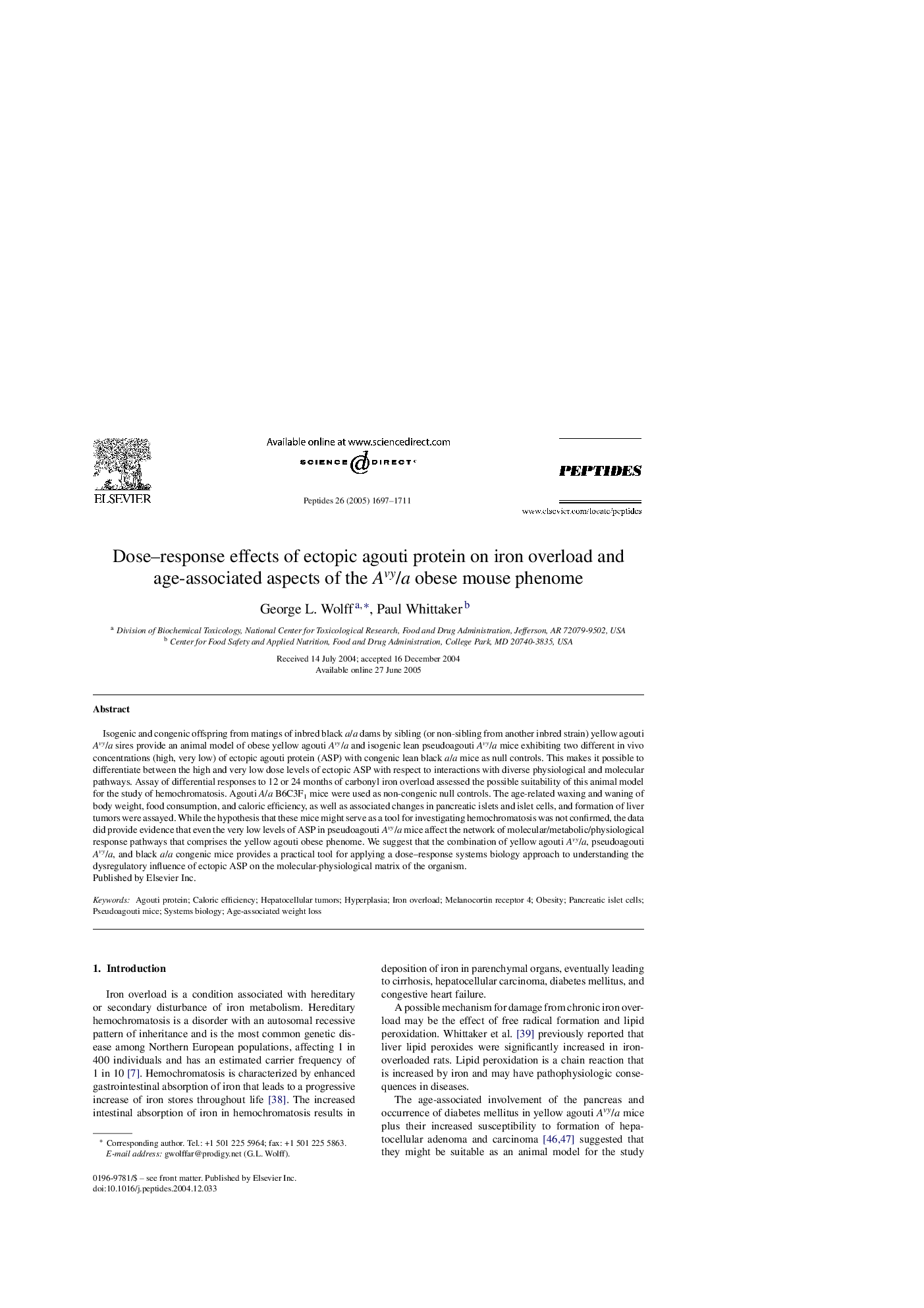| Article ID | Journal | Published Year | Pages | File Type |
|---|---|---|---|---|
| 2008172 | Peptides | 2005 | 15 Pages |
Abstract
Isogenic and congenic offspring from matings of inbred black a/a dams by sibling (or non-sibling from another inbred strain) yellow agouti Avy/a sires provide an animal model of obese yellow agouti Avy/a and isogenic lean pseudoagouti Avy/a mice exhibiting two different in vivo concentrations (high, very low) of ectopic agouti protein (ASP) with congenic lean black a/a mice as null controls. This makes it possible to differentiate between the high and very low dose levels of ectopic ASP with respect to interactions with diverse physiological and molecular pathways. Assay of differential responses to 12 or 24 months of carbonyl iron overload assessed the possible suitability of this animal model for the study of hemochromatosis. Agouti A/a B6C3F1 mice were used as non-congenic null controls. The age-related waxing and waning of body weight, food consumption, and caloric efficiency, as well as associated changes in pancreatic islets and islet cells, and formation of liver tumors were assayed. While the hypothesis that these mice might serve as a tool for investigating hemochromatosis was not confirmed, the data did provide evidence that even the very low levels of ASP in pseudoagouti Avy/a mice affect the network of molecular/metabolic/physiological response pathways that comprises the yellow agouti obese phenome. We suggest that the combination of yellow agouti Avy/a, pseudoagouti Avy/a, and black a/a congenic mice provides a practical tool for applying a dose-response systems biology approach to understanding the dysregulatory influence of ectopic ASP on the molecular-physiological matrix of the organism.
Keywords
Related Topics
Life Sciences
Biochemistry, Genetics and Molecular Biology
Biochemistry
Authors
George L. Wolff, Paul Whittaker,
